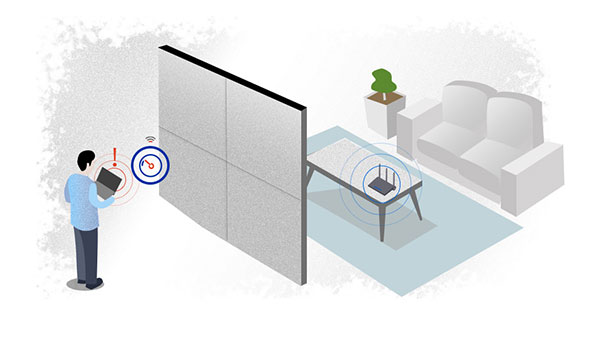Mesh WiFi or Whole Home WiFi systems consists of a main router that connects directly to your modem, and a series of satellite modules, or nodes, placed around your house for full WiFi coverage. They are all part of a single wireless network and share the same SSID and password, unlike traditional WiFi routers.
Picture this: You’ve just set up your home network with the latest WiFi hardware and a 100 Mbps Internet connection. But for some reason, you still encounter buffering when you try to stream video in the bedroom. You called your Internet Service Provider (ISP) and everything checks out, so what’s the deal? Chances are, your WiFi isn’t set up efficiently for a mesh WiFi system.

What’s Slowing Down Your Network?
The weakened signal or WiFi dead spots could be the result of physical obstructions. Simple things like the floor, doors, and walls of your home can come between you and your router, especially if they’re made of metal, brick, or concrete. Or perhaps the distance is simply too great in a large home, and your traditional router is only capable of reaching as far as the kitchen, but not to the backyard, the garage, or a distant bedroom. Interference from other devices could also be the culprit, whether it’s your microwave, cordless phone, or baby monitor. If you live in close quarters with other WiFi networks and devices—such as in an apartment complex—this problem increases tenfold. Think of it like a room full of people who are all speaking at once—nobody’s going to be heard very well.

Blanketing Your Home with WiFi
A better solution is WiFi that works with your home design, instead of against it. Think of a
standard router like a speaker. You could be playing music loudly in the front of your home,
but the office in the back will only hear a faint echo. A standard router works the same
way—you can only move so far from it before the signal starts to wane, and eventually it’s
going to cut out altogether
Instead, why not install a “speaker” in each room of the house? That’s how whole home
WiFi or mesh networks work, with multiple nodes installed around your home so you’ve got
solid WiFi coverage from one end to the other.

Modular Expansion
A modular mesh whole home WiFi system is flexible and scalable, giving you a customizable method of expanding your WiFi without the need to add range extenders, which have performance and ease-of-use issues. It’s just like installing lighting fixtures to illuminate your home; you can place your nodes anywhere in your home. You choose which rooms need the coverage, and when it’s time to add more to extend the signal even further.
Easy Guided Set Up and Management
Most mesh systems use a mobile app for a guided setup.—The app walks you through the set-up process for optimal placement of nodes throughout your home. It will help you find dead zones, so you can place nodes in those areas that otherwise wouldn’t receive WiFi coverage. The mobile app also incorporates some cool features to help you manage your WiFi, such as parental controls, device prioritization, guest access, and more.

Why Not Use a Range Extender?
Comparing range extenders to whole home WiFi is like comparing apples to oranges. Range
extenders are certainly effective when it comes to increasing the range of your router, but
they do so at the expense of WiFi performance, which gets cut in half.
In a large space where WiFi struggles to reach every corner, a range extender can actually
diminish the overall performance of your network, creating a bottlenecking effect. You
might also experience connection issues when jumping from the router to the extender,
because you’ll need to switch networks manually. For example, even when standing next to
the range extender, you can still experience dead zones or slowdowns if you haven’t
manually changed your device over from the router’s signal. These two separate networks
also have different names and interfaces, which can be a serious hassle.


